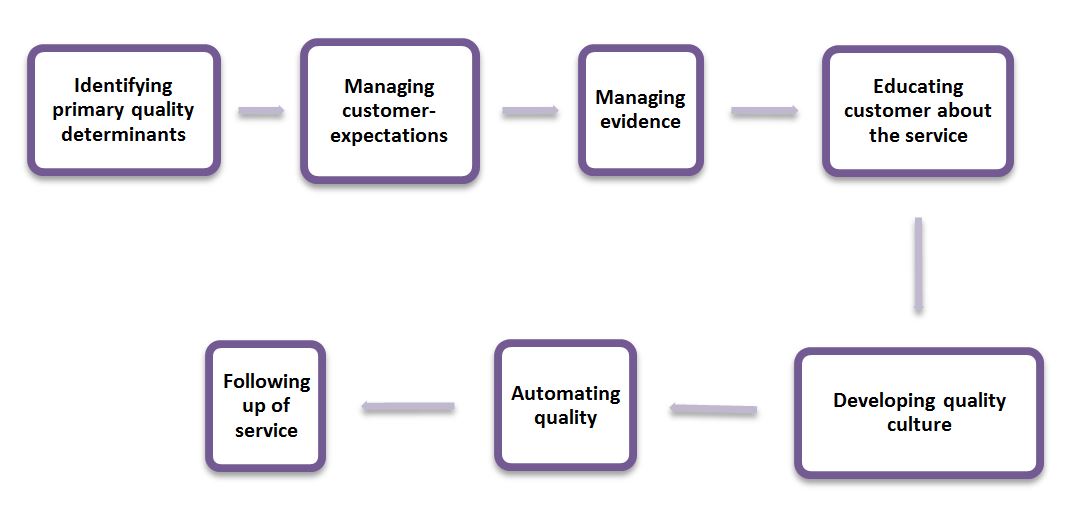Quality is fitness for use, the extent to which a service successfully serves the purpose at user. Service Quality refers to the difference between customer expectations and service provider`s actual performance.
FACTORS AFFECTING SERVICE QUALITY
- Access – Ease and approachability of service
- Aesthetics – The extent to which service package components are pleasing to the customer
- Attentiveness/helpfulness of staff/service provider
- Flexibility i.e. extent and degree of customization
- Cleanliness of the premises
- Comfort of the customer
- Commitment of management to solve customer problem
- Competence of the service provider
- Reliability of the service provider
- Security of information, good, health etc. of the customer
DIMENSIONS OF SERVICE QUALITY
- Tangibles – Appearance of physical facilities, equipment, personnel etc.
- Reliability – Ability to perform the promised service, dependably and accurately
- Responsiveness – Willingness to help customers, assuring the customer and providing prompt service
- Competence – Skill and expertise with the service is executed/ knowledge of staff
- Courtesy – Politeness, respect
- Creditability – Consistency in performance and ability of the service to inspire trust and confidence
- Communication – Ability of staff to communicate, listen and understand
- Security/Safety of service
- Understanding the customer
PROBLEMS OF SERVICE QUALITY CONTROL
- Inseparability of production and consumption
- Communication gaps –
- Failure to deliver promises
- Failure to keep customer informed
- Failure to listen on communicate in a way he can understand
- Viewing customer as statistics
- Short run/ profit motive of the business
PROCESS OF SERVICE QUALITY MANAGEMENT

Steps in managing service quality :
- Identify the primary factors that affects the service quality(customer experience and customer expectations)
- Manage Customer Expectations by understanding customer needs and expectations
- Re-organize tangible elements i.e. office space, staff, physical equipment etc. for better performance
- Educate the customer about the service through effective communication
- Develop quality standards and quality driven organization culture according to customer expectations
- Automate and maintain quality standards
- Take regular Feedback from customers and correct any deviations in performance standards